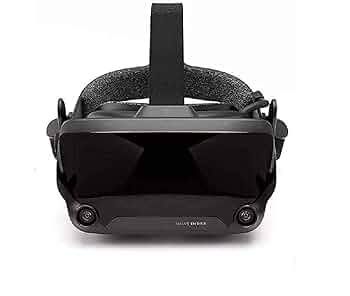Valve Index

The hum in the lab, the rhythmic whir of the server rack, always soothed me. But tonight, the silence was deafening. Empty. My usual VR rig, a hulking beast of custom components, sat disassembled. The Valve Index had arrived. A colleague, ever the pragmatist, had scoffed. “Overkill,” he’d muttered, eyeing the specs, a cynical glint in his eye. “Consumer grade.” He clearly hadn’t seen what I was about to.
I’ve spent years chasing the perfect virtual experience, from bulky early headsets to bleeding-edge prototypes. The quest for pure presence is the holy grail, the thing we’re all striving for. Unboxing the Index was a moment. The build quality feels… substantial. This isn’t cheap plastic. The facial interface? Plush, a real step up in comfort, especially when compared to the pressure points of the original HTC Vive. You notice details like that when you’re in VR for hours.
Then there’s the resolution. 1440x1600 per eye. It sounds like marketing fluff, but the difference is stark. Text is actually readable. Fine details that would blur on other headsets pop into sharp focus. This clarity is a game-changer for simulation work, a use case I heavily explore. The controllers, though a little… alien at first, melt into your hands after an hour. Their finger-tracking is surprisingly accurate. Imagine wielding a virtual wrench or a scalpel with near-perfect precision. It changes everything.
The field of view is also noteworthy, at a respectable 110 degrees. It’s an immediate improvement over some older models, giving you a much more immersive feel, practically eliminating the ‘tunnel vision’ effect. The inside-out tracking, a feature I initially scoffed at, is remarkably stable. No external sensors needed, a blessing for a cramped lab and makes setup infinitely easier. Plus, it’s compatible with PlayStation Vita… which is a nice, quirky addition for anyone with a Vita lying around (yes, they still exist!).
Now, the small print: the refresh rate. While the Index supports up to 144Hz, pushing those frames requires serious horsepower. My top-of-the-line GPU still stutters occasionally on some demanding titles, a slight glitch that, for now, I address by dialing the refresh rate down to a smoother 120Hz. It’s a minor compromise. For most users, it won’t be a problem.
So, is the Valve Index perfect? No. But it’s as close as consumer VR gets right now. For the simulation scientist, the serious gamer, the architectural designer, anyone seeking a real step up in immersive experience, it’s an investment well worth making.